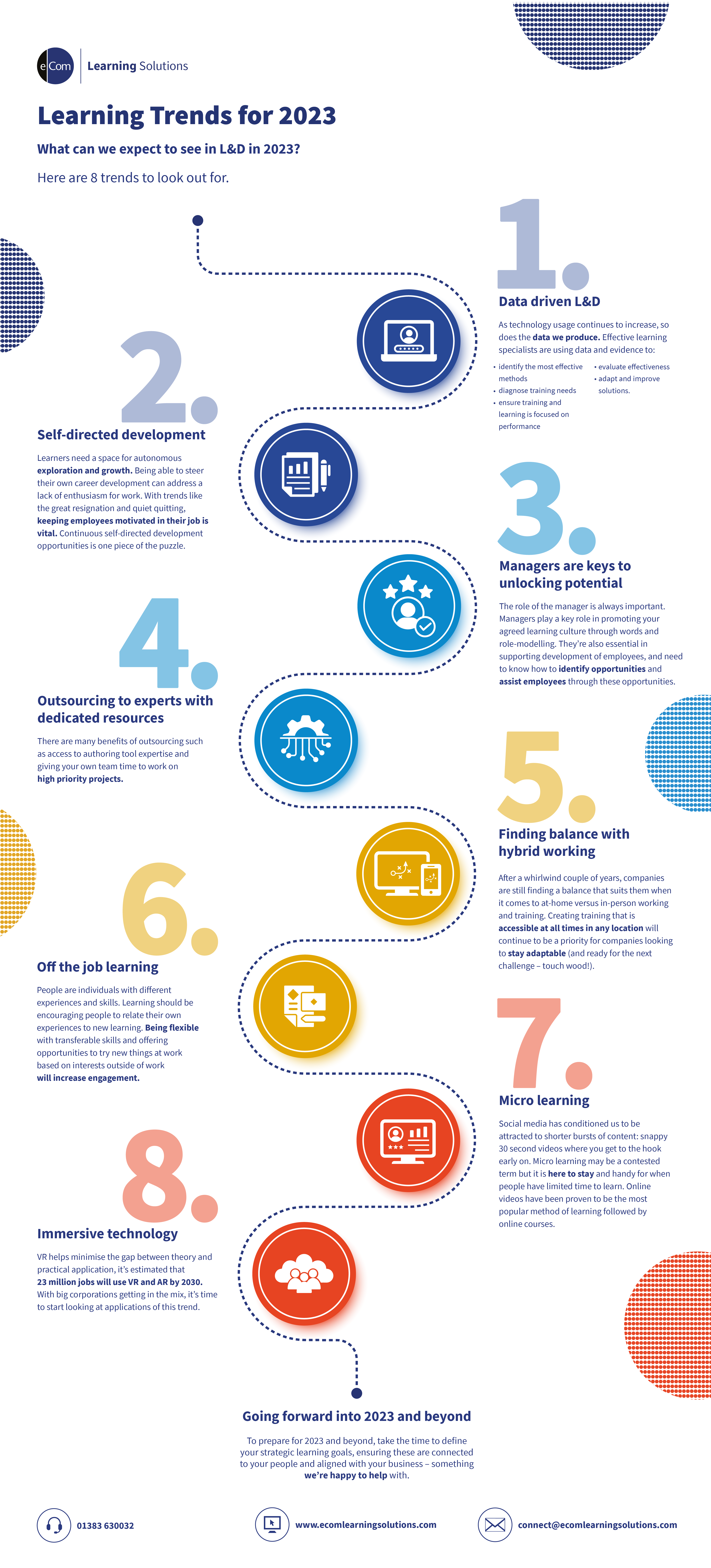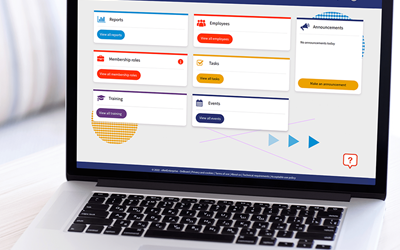8 Learning Trends for 2023 - Infographic
To get the year off to the strongest possible start, it’s worth taking the time to make sure your strategic learning goals are aligned with the needs of your business. As well as this, it’s important to be aware of current L&D trends, since these can shape your thinking.
With this in mind, we’ve identified eight learning trends for 2023 and have created this infographic to make them easily digestible - essential reading as you prepare for the road ahead.
1 Data driven L&D
As technology usage continues to increase, so does the data we produce. Effective learning specialists are using data and evidence to:
- identify the most effective methods
- diagnose training needs
- ensure training and learning is focused on performance
- evaluate effectiveness
- adapt and improve solutions
2 Self-directed development
Learners need a space for autonomous exploration and growth. Being able to steer their own career development can address a lack of enthusiasm for work. With trends like the great resignation and quiet quitting, keeping employees motivated in their job is
vital. Continuous self-directed development opportunities is one piece of the puzzle.
3 Managers are keys to unlocking potential
The role of the manager is always important. Managers play a key role in promoting your agreed learning culture through words and role-modelling. They’re also essential in supporting development of employees, and need to know how to identify opportunities and assist employees through these opportunities.
4 Outsourcing to experts with dedicated resources
There are many benefits of outsourcing such as access to authoring tool expertise and giving your own team time to work on high priority projects.
5 Finding balance with hybrid working
After a whirlwind couple of years, companies are still finding a balance that suits them when it comes to at-home versus in-person working and training. Creating training that is accessible at all times in any location will continue to be a priority for companies looking to stay adaptable (and ready for the next challenge – touch wood!).
6 Off the job learning
People are individuals with different experiences and skills. Learning should be encouraging people to relate their own experiences to new learning. Being flexible with transferable skills and offering opportunities to try new things at work based on interests outside of work will increase engagement.
7 Micro learning
Social media has conditioned us to be attracted to shorter bursts of content: snappy 30 second videos where you get to the hook early on. Micro learning may be a contested term but it is here to stay and handy for when people have limited time to learn. Online videos have been proven to be the most popular method of learning followed by online courses.
8 Immersive technology
VR helps minimise the gap between theory and practical application, it’s estimated that 23 million jobs will use VR and AR by 2030. With big corporations getting in the mix, it’s time to start looking at applications of this trend.




